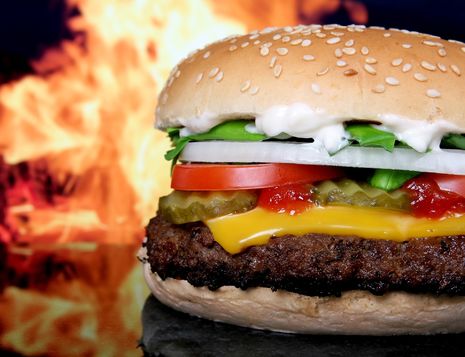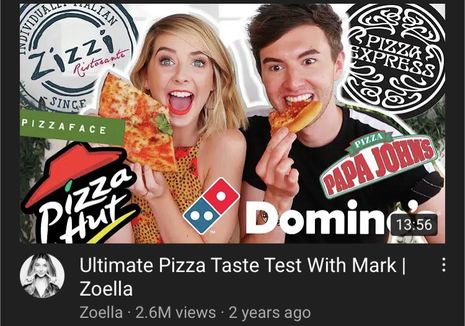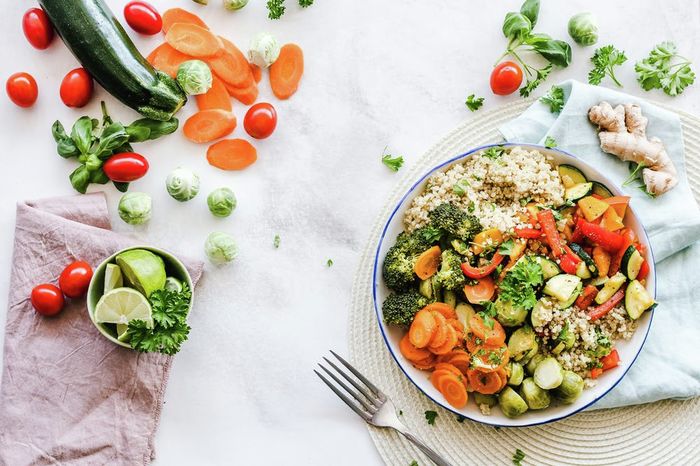Why our brains need a break from food and drink advertising online
Orla Woodward discusses the government’s recent ban on advertising unhealthy food and explains why it is necessary from a scientific perspective.

Content Note: This article contains discussion of eating disorders and detailed discussion of obesity.
On 10th November 2020, the Government launched a public consultation on the total ban of the online advertising of unhealthy food, proposed as part of its Tackling Obesity strategy published in July 2020. This ban would apply to adverts for food and drink products high in fat, sugar and salt online, such as on YouTube and other social media sites.
“A poor-quality diet presents us with some of the UK’s greatest health challenges. In England, 67% of men and 60% of women are overweight or obese, as well as over a quarter of children aged under 16.”
A poor-quality diet presents us with some of the UK’s greatest health challenges. In England, 67% of men and 60% of women are overweight or obese, as well as over a quarter of children aged under 16. Excess weight is a major risk factor for multiple chronic diseases, including type 2 diabetes and cancer, and even early death. There is also evidence that obesity increases the risk of COVID-19-related complications and hospitalisation. Each year the NHS spends a startling £6.1 billion treating obesity-related conditions with the wider societal cost of obesity estimated at £27 billion.

Rates of obesity have tripled in the last 30 years, and it is not because we have become more “weak willed” or irresponsible. We live in a world where we are surrounded by food, both literally and in tempting reminders. Food and drink companies use adverts to compel us into purchasing, and subsequently consuming, the products they are offering. These adverts are designed to trigger complex reward systems in our brains making these food/drinks almost impossible to resist. They also help build up brand recognition. There is a reason you can list various crisp, chocolate and fizzy drink brands without having to think about it.
So, what happens in your brain when you see these adverts? Within the brain reward system there are multiple, interconnected circuits which control the ‘liking’ and the ‘wanting’ of food and drink. These circuits are influenced by our energy requirements, emotional state, exposure to certain products and societal norms. One key circuit is the corticolimbic system, comprising brain areas called the prefrontal cortex, hippocampus and amygdala which are involved in the emotional and memory processing of food experiences. The dopaminergic mesolimbic pathway connects regions in the centre of the brain, the ventral tegmental area and substantia nigra, to a region in the forebrain, the striatum, and encodes the motivation or ‘wanting’ to eat. Finally, the striato-hypothalamic circuit connects the striatum to the hypothalamus, a key control centre in the brain. This pathway integrates energy signals from the body with signals from the corticolimbic and mesolimbic circuits to assess the reward value of food, i.e. do you need it, like it and/or want it enough to eat it. The ‘liking’ of food is processed in specific ‘hotspots’ within the nucleus accumbens and ventral pallidum of the striato-hypothalamic circuit. These circuits communicate with each other, and other brain regions, to coordinate what and when we eat/drink.
“Food is one of the most effective stimulators of brain activity.”
Food is one of the most effective stimulators of brain activity. In one study, the sight and smell of appetising food led to a 24% increase in whole brain activity of hungry participants. Several studies have demonstrated reward circuit activation following the presentation of food and drink images compared to non-food images. This activation occurs in all our brains but is enhanced in individuals living with obesity, binge-eating disorder and bulimia. Images of high fat/sugar food and drinks are also processed differently by our brains to healthy food/drink images and can cause us to respond faster in visual response tasks. Being able to spot and consume energy dense foods would have been an evolutionary advantage for our ancestors living in times of food scarcity. Thus, it is not surprising that our brains react rapidly to the sight of high fat/sugar food and drinks.
Finding food is essential for human survival whether you are living in the pre-agricultural era or in the digital age. Our brains have therefore evolved to ensure we seek out and consume enough food to survive. Despite now living in a time when, for most of us, food is readily available, it seems our brains are still driving us to eat whenever desirable food is presented to us, such as in adverts on websites, on video-sharing platforms and on social media. These adverts activate our reward systems and trigger our brains into ‘wanting’ these foods, often outside of our conscious awareness. You may see an ice cream advert while scrolling through social media, then later find yourself in the ice cream aisle of the supermarket without even remembering the advert you had seen earlier that day. This can lead to us eating much more than we need to survive. This overconsumption of rewarding foods can change our brain reward pathways, meaning we need to eat more of that food to get the same rewarding effect.
“There have also been several recent studies which illustrate the power of social media influencers in driving consumption of an advertised snack and later food intake.”
Due to the COVID-19 pandemic, UK adults now spend more than four hours a day, or a quarter of their waking life, online. This is a huge leap from the average of 3.5 hours recorded in September 2019, but time spent online is increasing yearly. Records show time spent online doubled from just under 1.5 hours in 2005 to almost three hours in 2015. Children’s online presence is also increasing yearly, with over half of 10-year olds and almost 100% of 15-year olds owning a smartphone. The adverts we see while online therefore have a huge influence on our brains and subsequent behaviour.
There have been few studies investigating the direct link between online advertising of food/drink and increased consumption due to myriad ethical and legal barriers surrounding this research. However, there is a wealth of evidence demonstrating that television and video game adverts of low nutrient, energy dense food/drink increase food intake are associated with increased body weight. There have also been several recent studies which illustrate the power of social media influencers in driving consumption of an advertised snack and later food intake. The most viewed video by vlogger Zoella, who has 11.2 million subscribers on YouTube, compares different takeaway pizza brands. Do we need any more evidence of social media influencing food choices than that?
Considering the evidence outlined here, it is clear that online adverts for food/drinks high in fat, sugar and salt are bad for our mental and physical health. Note that this does not mean all advertising is bad for our health. Advertising that promotes health should be encouraged. To rebalance advertising, the Government’s proposal to ban online advertising of unhealthy foods should be welcomed as a highly beneficial opportunity to improve public health. Reducing national obesity rates will of course take more than this one policy, but every action that makes it easier for people to lead healthier lives is a step in the right direction. Decisive action is needed from the Government, industries and the public if we want to improve the health of people across the country, and the time to act is now.
You can read more about the proposed ban and also submit your own comments before the 22nd December 2020 here.
 Comment / The (Dys)functions of student politics at Cambridge19 January 2026
Comment / The (Dys)functions of student politics at Cambridge19 January 2026 Arts / Exploring Cambridge’s modernist architecture20 January 2026
Arts / Exploring Cambridge’s modernist architecture20 January 2026 Features / Exploring Cambridge’s past, present, and future18 January 2026
Features / Exploring Cambridge’s past, present, and future18 January 2026 Theatre / The ETG’s Comedy of Errors is flawless21 January 2026
Theatre / The ETG’s Comedy of Errors is flawless21 January 2026 News / Local business in trademark battle with Uni over use of ‘Cambridge’17 January 2026
News / Local business in trademark battle with Uni over use of ‘Cambridge’17 January 2026








